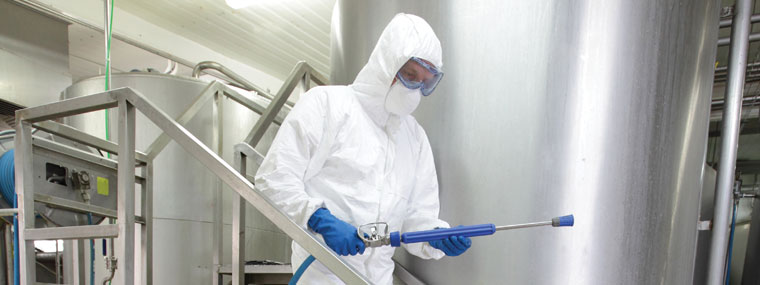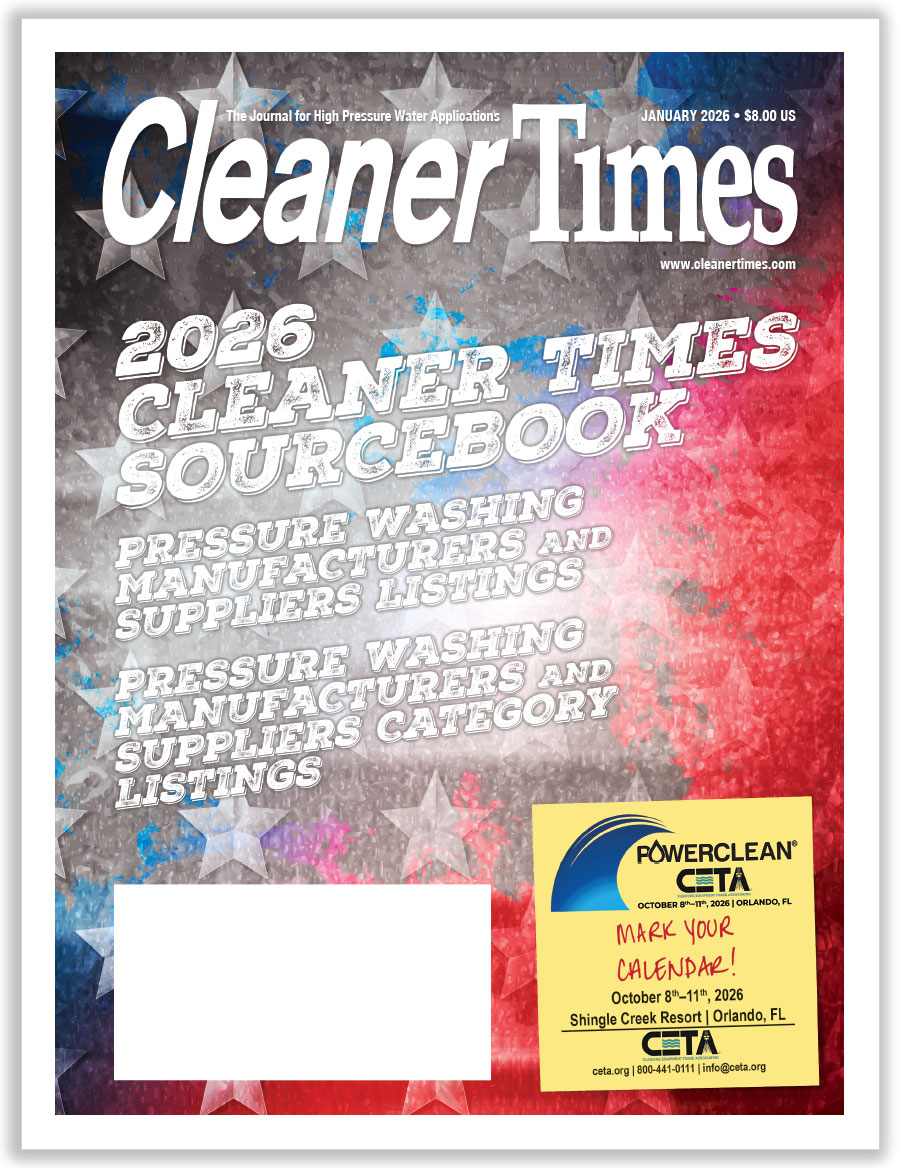
Protecting Employees and Property
By Diane M. Calabrese / Published February 2021

A whole greater than the sum of its parts. That’s one view of complementary approaches taken to protect employees and property.
Ask for recommendations about how to best protect employees. The responses will reflect the niche of the person being asked, says Elizabeth Smith, director of human resources at Hydro-Chem Systems Inc. in Caledonia, MI.
“The best way to protect employees is a multi-prong approach,” explains Smith. “This starts with having a diverse management team that are experts in their fields. The end result will be a 360-degree barrier to protect the employee.”
Financial performance and accurate financials to ensure “the doors stay open” might be advice accounting and finance professionals give, says Smith. And “supporting employees with physical, financial, and mental health resources so they get more out of their career” may be the suggestion from human resources. Safety officers will focus on training in hazards and best practices.
“They are all correct,” says Smith of the individuals with different vantages. “Employees are the most important asset any company has; with that, they should be protected as such.”
Smith cites measures in place at her company, including “rigorous hiring practices, criminal background checks, initial and random drug and alcohol testing, a third-party driver monitoring system, monthly safety inspections, and coming in 2021, an online safety program to keep our remote workers engaged and in step with our on-site employees” as foundational. And, of course, her company adapts quickly, as necessary.
“Over the last year businesses have developed pandemic procedures, including a preparedness and response plan,” says Smith. “Check your state’s OSHA office to see if they offer a free ‘Ambassador Program’ that can get your facility certified as being COVID-19 compliant.”
Engaged employees shun complacency and work in a safe manner. “Employers have the responsibility to find creative ways to recapture the employee’s attention toward safe workplace/jobsite practices,” says Smith.
Spontaneous jobsite inspections and third-party training programs get attention, says Smith. The spontaneous inspections not only verify that things are being done appropriately but also reveal potential gaps in safety programs. An outside trainer introduces novelty, thereby possibly holding interest better.
“Sometimes the same message delivered by a new face is the easiest way to add a ‘B12 shot’ to a safety program,” says Smith. “I never recommend using money as a replacement for intrinsic motivation; however, money can be exciting. And for companies looking to bring new life to a humdrum safety program, a little green can do that.”
Safe work practices protect employees and property. But property also requires specific attention.
“If you are new to the industry, the greatest—but far from exciting—way to protect your property is to have the appropriate insurances in place from day one,” says Smith. “Get a referral to a commercial insurance broker. Brokers have a plethora of insurance options that best fit your industry, which helps eliminate coverages you may not need.”
Insurance needs a company may have span everything from theft and accident to (ever-more-important) cybercrime. Seeking out advice from an agent is one insurance professionals endorse.
“Insurance companies’ loss-control departments can be a huge asset to everyone in business,” says Tom Svrcek, president of CSC Insurance Options and Joseph D. Walters Insurance in Belle Vernon, PA. “Loss-control services help employers and companies minimize losses by identifying, evaluating, and providing control measures.”
When a company takes the time to get expert advice on loss control, it gains in multiple ways beyond minimizing losses. Production and safety are inextricably linked to measures that eliminate losses.
“Insurance companies provide free-of-charge loss-control services,” says Svrcek. His company, in fact, emphasizes custom solutions for its customers.
Uniquely tailored insurance solutions are a must for power washing contractors, for example. “They are all doing something different,” says Svrcek. Someone washing and refurbishing decks will have different needs from someone doing ice dam removal.
Svrcek’s company handles accounts for manufacturers and distributors as well as for contractors. The overarching loss-control goals are the same for all: fewer accidents, minimize claims.
“Employees need to know employers care about their people,” says Svrcek. And developing robust loss-control procedures demonstrates that employers care.
Getting It Done
The safety-security template is strong throughout our industry. Shaped by a commitment to professionalism and a desire to comply with expectations from regulators at all levels, the template is the starting point.
Replicates are enhanced and refined at each company in slightly different ways. Two veteran members of our industry share some of their approaches to protecting employees and property.
If he were asked to put one recommendation at the top of a list of how to protect employees and property, it would be “training and education,” says Doug Rucker, owner of Clean and Green Solutions in Porter, TX. “Ten years ago, we were the first to open a hands-on program, along with classroom training, for new startup companies.”
Commitment has grown. “We were also the first to develop online training, with testing, for individual solo operators as well as those with employees,” says Rucker. A decade on, there are many venues for learning.
“Today there are many that have gotten into the education field for exterior cleaning,” says Rucker. “There is no shortage of training available, and no reason not to get it. Students just need to make sure they are doing their due diligence in researching and making sure the person teaching is experienced.”
Find out the qualifications of any individual offering instruction. “Nowadays it seems anyone with a YouTube channel and pressure washer is giving free advice, and some of it is not so good,” says Rucker.
Always begin by hiring the most competent employees. “We perform background checks with previous employers as well as friends or family listed on the application form,” says Rucker.
Once the employees are on board, they must understand that training is ongoing. A good employee knows what he or she does not know and never forges ahead when there is a question about how to proceed. To promote the asking, Rucker recommends formalizing the sequence.
“I would also have employees sign documents that they have been trained and understand the company procedures for property protection,” says Rucker.
“Any ‘special circumstance’ they run across on a job that was not covered in training should be discussed with their supervisor before proceeding with the job.”
As for protecting property, Rucker encourages employers to think in broad terms when training employees. Yes, there’s equipment and company vehicles, but it goes to the full range of structures and objects encountered.
“There are many items on a [job-site] property that must be protected, and they can vary from property to property and residential to commercial,” says Rucker. “First and foremost, I’d recommend learning safe and proven ways to protect a property, then document your process and procedure in writing and make it part of your standard operating procedures. Having a training video would also be something I’d recommend.”
Above all, retain the attention of employees. “Regular safety meetings remind employees of the importance of their safety as well as of protecting property,” says Rucker.
Show what can happen if there’s a lapse in protocol. “We will go over property damage caused by other companies we see firsthand or posted in various online communities,” says Rucker. “Even though something may not have happened to us, we can still use others’ issues to be proactive in preventing safety or property issues.”
Keep employees focused so they can anticipate problems and avoid them, says Rucker. “On every estimate we take pictures of the property. We then discuss issues with the team scheduled for that job, that morning before leaving the office. This helps keep it fresh and on the forefront of their mind.”
Complying with regulations takes time and energy. Much of the investment, though, is returned because the effort required bolsters protection of employees and property.
“Most businesses have standard operating procedures [SOPs}, and there is an employee file that contains most pertinent information, which includes a signed copy of the company’s SOPs,” explains Bill Sommers, president, Pressure Systems Indus-tries Inc.–Mist Air in Phoenix, AZ, “along with the business employee handbook—signed—and any other pertinent information relative to best business practices.”
The business employee handbook most commonly builds on the rights and responsibilities of employees. Many rights of employees derive from responsibilities of the employer that are established by the federal, state, or local governments or entities (e.g., OSHA).
“The company’s responsibilities are to make available all government mandated programs for employees, such as workers’ compensation insurance and its ilk,” says Sommers. Also established
are parameters on how employers can monitor employees.
“Notice to employees must be given for background checks and where the security cameras are,” for instance, says Sommers. All that must be covered in SOPs, too.
Not all responsibilities of employers are spelled out. To fully protect employees and property an employer must adhere to rules and interpret guidance from regulators, explains Sommers. The employer must “satisfy the intangibles” and keep “awareness” high.
Is it complex? Yes, it is, but employers get it all done every day.





